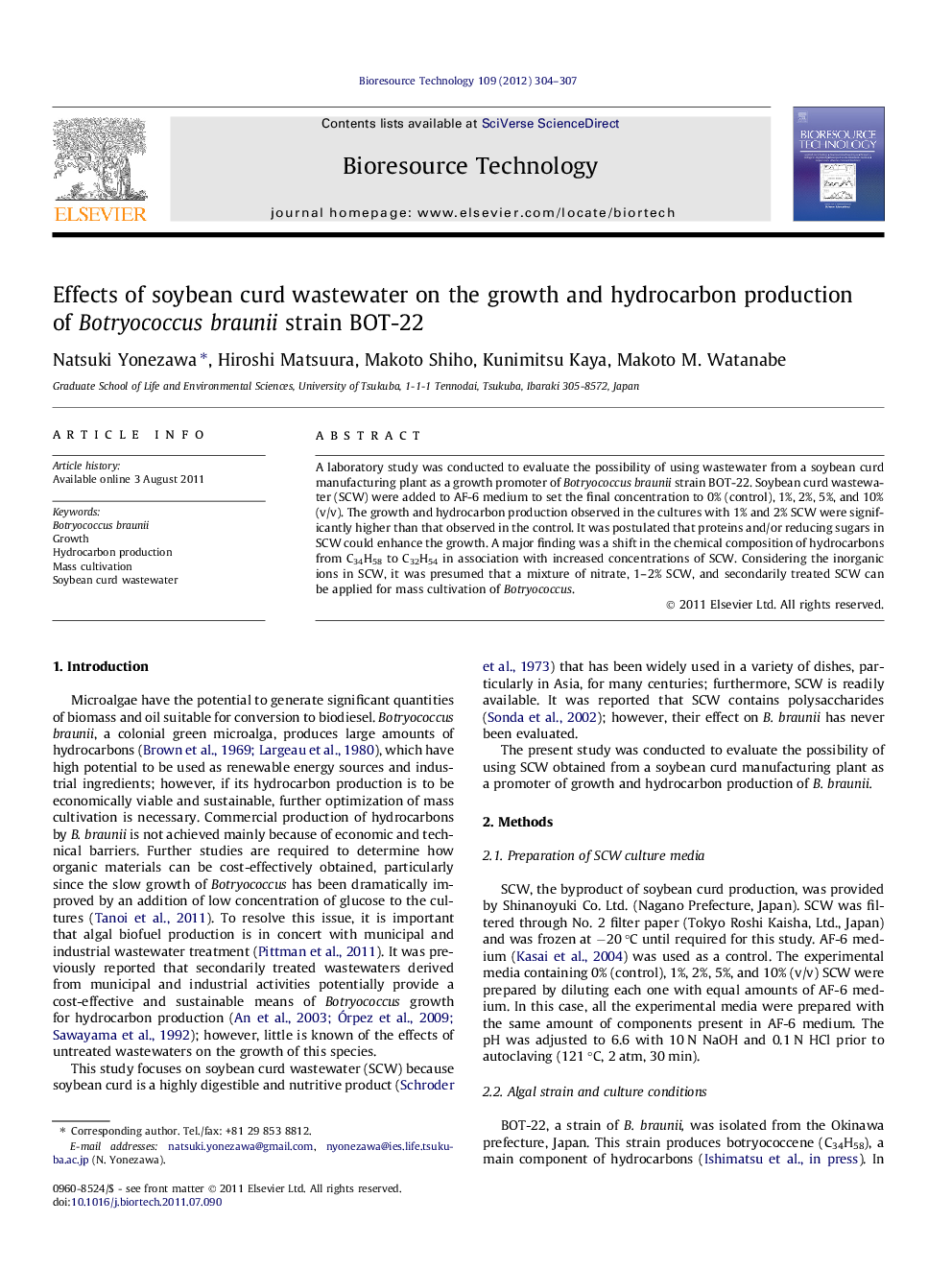| Article ID | Journal | Published Year | Pages | File Type |
|---|---|---|---|---|
| 681651 | Bioresource Technology | 2012 | 4 Pages |
A laboratory study was conducted to evaluate the possibility of using wastewater from a soybean curd manufacturing plant as a growth promoter of Botryococcus braunii strain BOT-22. Soybean curd wastewater (SCW) were added to AF-6 medium to set the final concentration to 0% (control), 1%, 2%, 5%, and 10% (v/v). The growth and hydrocarbon production observed in the cultures with 1% and 2% SCW were significantly higher than that observed in the control. It was postulated that proteins and/or reducing sugars in SCW could enhance the growth. A major finding was a shift in the chemical composition of hydrocarbons from C34H58 to C32H54 in association with increased concentrations of SCW. Considering the inorganic ions in SCW, it was presumed that a mixture of nitrate, 1–2% SCW, and secondarily treated SCW can be applied for mass cultivation of Botryococcus.
► Soybean curd wastewater (SCW) can be used as a promoter of growth and hydrocarbon production of Botryococcus braunii. ► The highest biomass production was obtained from the cultures with 1% and 2% (v/v) SCW. ► With increased concentrations of SCW, the chemical composition of major hydrocarbons shifted from C34H58 to C32H52. ► A mixture of nitrate, 1–2% SCW and secondarily treated SCW can be applied for mass cultivation of Botryococcus.
